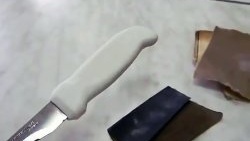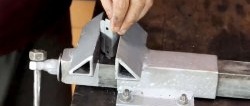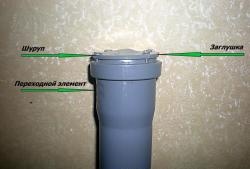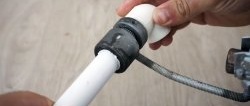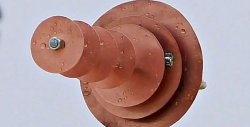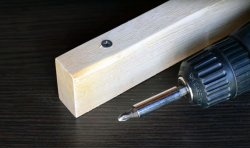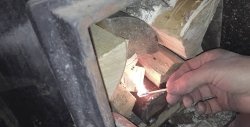How to make a universal quick-release tool handle
Over time, the handles on tools wear out, break and become unsuitable for further use. Of course, you can make or buy new ones, but it will take some time, and the tool is needed urgently.
A way out of this situation can be a universal quick-release handle, into which you can quickly and reliably install any tool and continue working without wasting time, money or injuring your hands.
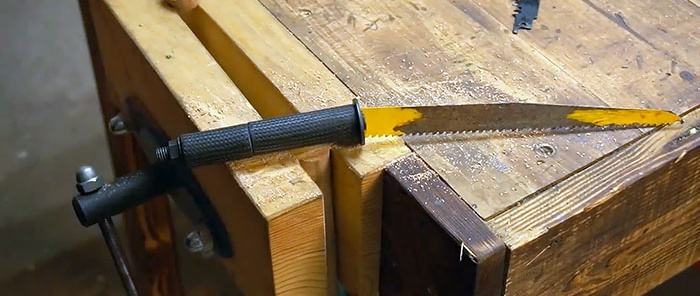
Even a beginner can cope with the planned work if the following materials and tools are at hand:
To cope with the upcoming work, we will need:
scissors for cutting plastic pipes; triangle and marker; drill and grinder; pliers and construction knife; sandpaper and needle file; vice, pin, etc.
We mark and cut two pieces from the polypropylene pipe, one long, the other shorter.We process the outside of the tubes with sandpaper to give them some roughness (why - it will become clear a little later).
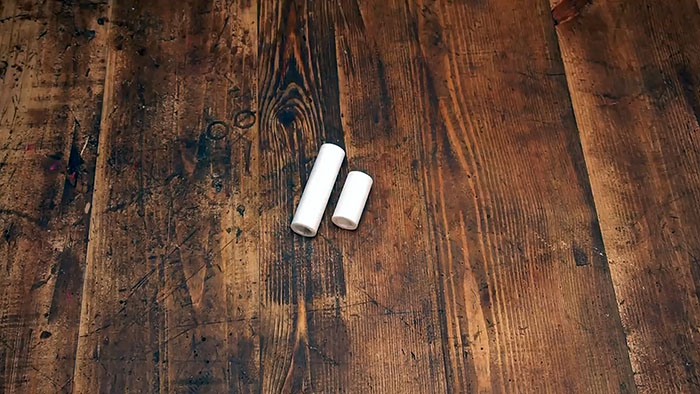
We fix the tubes on a pin, on which we pre-wind belts of construction tape exactly to the inner diameter of the plastic tubes.
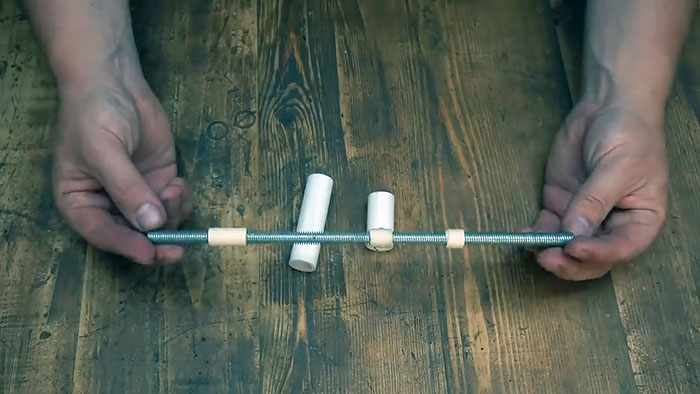
Mix two-component glue in a plastic cup according to the instructions for use, using a dosing syringe and a brush.
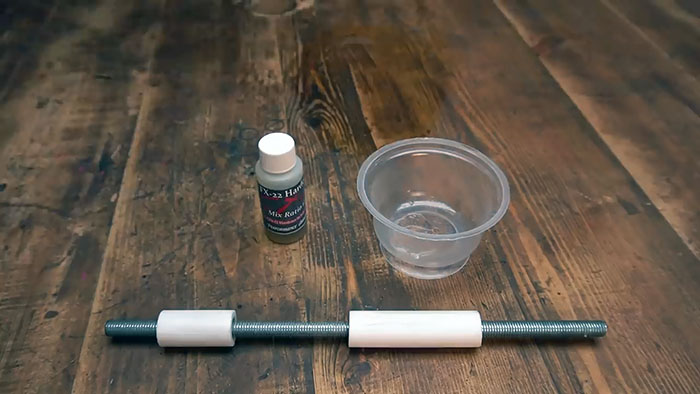
We apply the resulting glue to the rough surface of the tubes and stretch a piece of carbon fiber sleeve on top, the ends of which are secured to a pin with plastic clips.
We wrap the pre-opened sections of the stud with construction tape so that when the sleeves are pulled over the tubes, they do not stick to the stud.
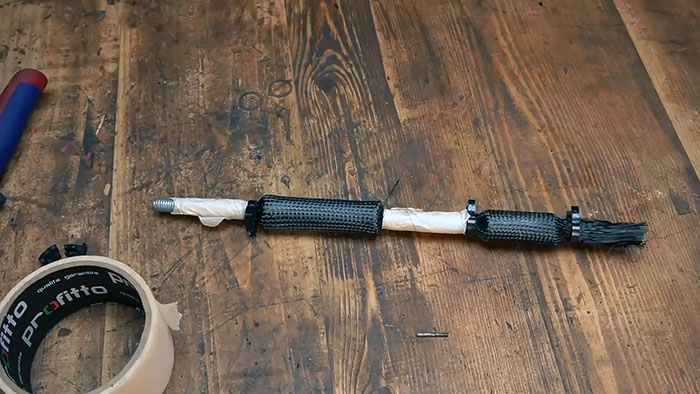
After the carbon fiber sleeve is completely glued to the plastic tubes, remove the clamps, and cut off the excess sleeves and tape with a construction knife.
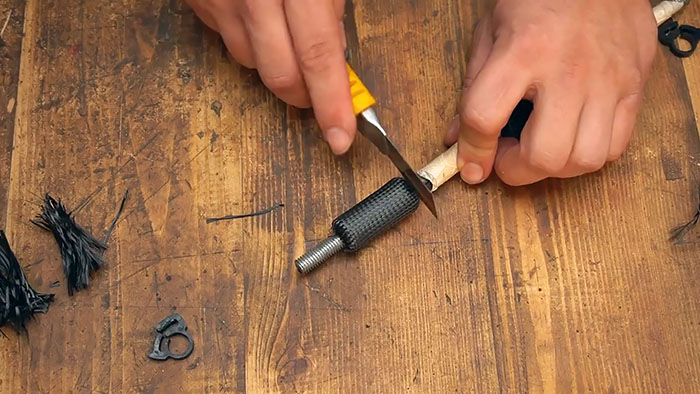
We cut the hairpin into two parts, on each of which we leave a tube with a glued carbon fiber sleeve. We clamp the ends of the parts of the studs one by one in the drill chuck, turn it on and sand the ends of the tubes with sandpaper.
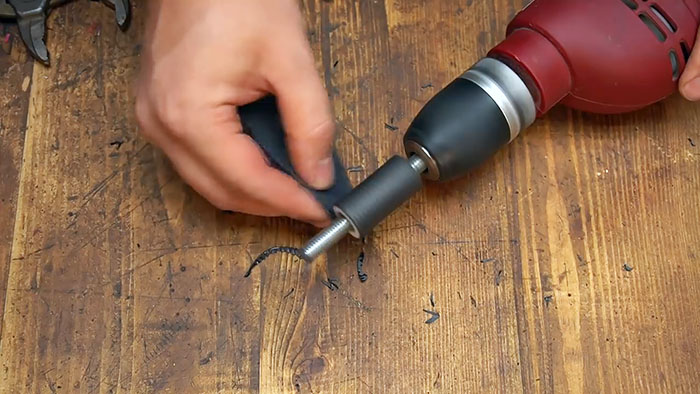
We disassemble the anchor bolt and mark the head (thickened) part of the threaded rod for axial cutting with a gradual exit (for strength) using a grinder. We clean the cut area with sandpaper to remove burrs and irregularities.
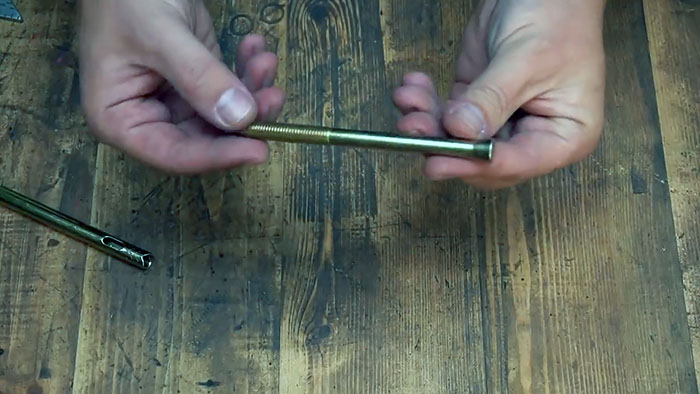
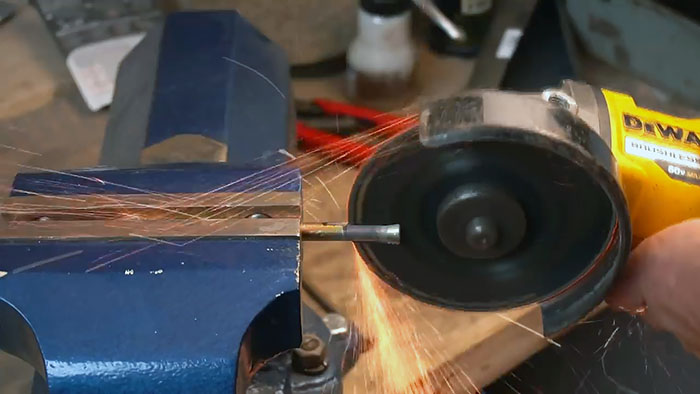
We mark an internal groove on a metal washer of suitable diameter for the nut and make it using a needle file.
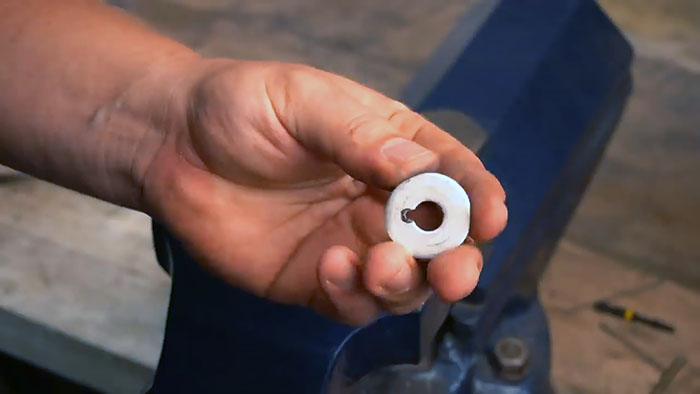
To make the visible parts of our handle look beautiful, we process the ends of the rod, washer and nut in bluing fluid. We wipe them with a napkin, after which the blued parts are ready for assembly.
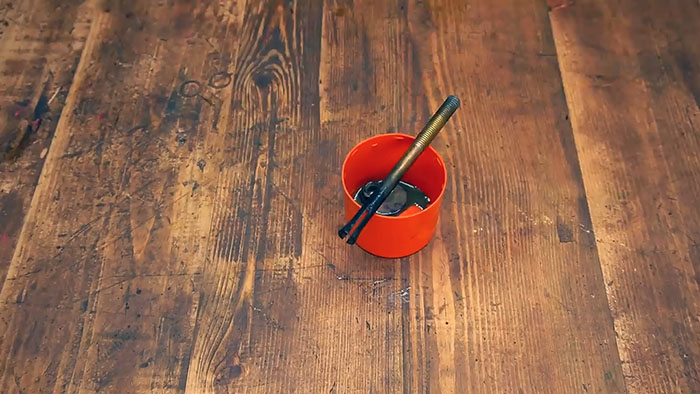
On the rod we alternately put a washer with a groove, a long tube, an anchor bolt cage, a short tube and at the very end we screw the nut onto the thread of the rod.
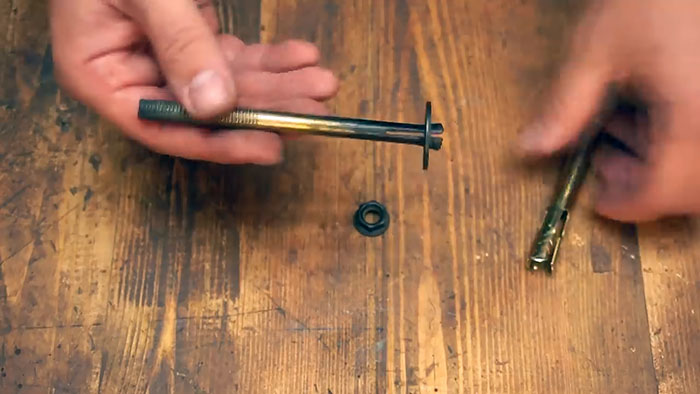
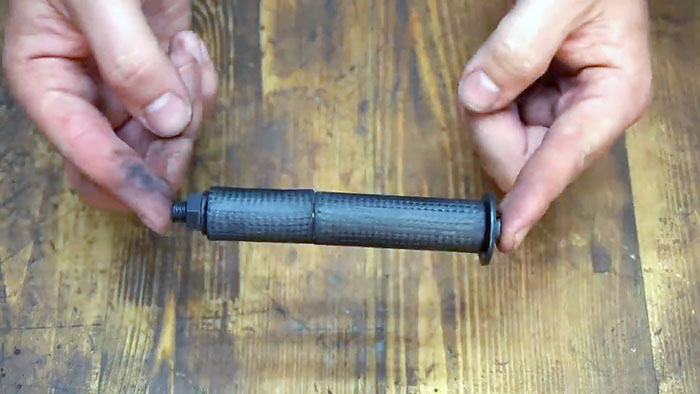
Our handle actually turned out to be universal and quick-release. You can install any saw blades into it: reciprocating, metal, jigsaws, as well as a needle file, knife blade and other tools.
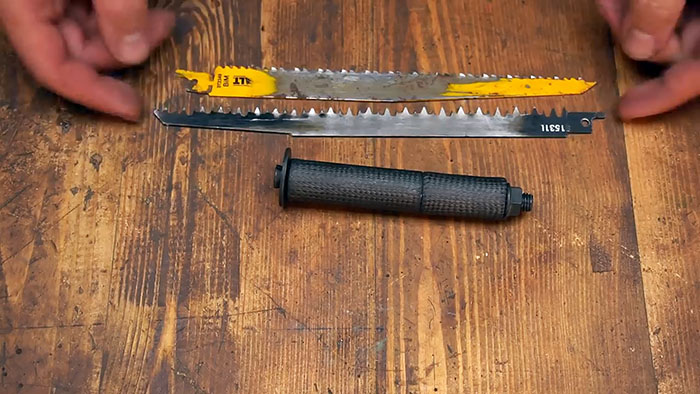
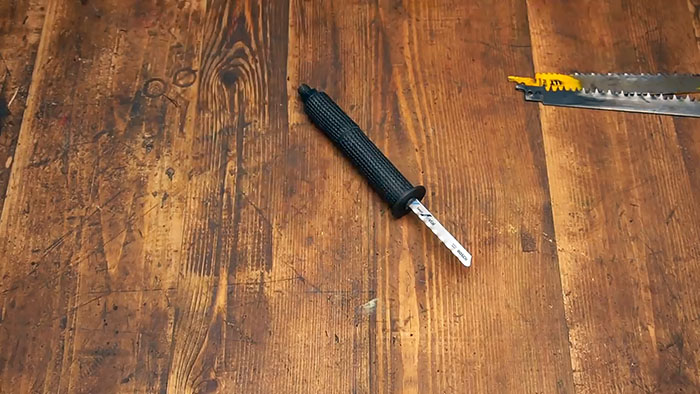
Moreover, the replacement takes place literally within a short time: it is enough to align the groove of the washer with the cut of the rod, insert the tool shank into the slots and turn the clamping nut several times.

Working with a tool like this is very pleasant, convenient, productive and, probably most importantly, safe.
A way out of this situation can be a universal quick-release handle, into which you can quickly and reliably install any tool and continue working without wasting time, money or injuring your hands.

Will need
Even a beginner can cope with the planned work if the following materials and tools are at hand:
- a piece of polypropylene pipe;
- carbon fiber sleeve;
- anchor expansion bolt;
- washer for the nut;
- two-component glue;
- construction tape;
- bluing agent.
To cope with the upcoming work, we will need:
scissors for cutting plastic pipes; triangle and marker; drill and grinder; pliers and construction knife; sandpaper and needle file; vice, pin, etc.
Handle manufacturing procedure
We mark and cut two pieces from the polypropylene pipe, one long, the other shorter.We process the outside of the tubes with sandpaper to give them some roughness (why - it will become clear a little later).

We fix the tubes on a pin, on which we pre-wind belts of construction tape exactly to the inner diameter of the plastic tubes.

Mix two-component glue in a plastic cup according to the instructions for use, using a dosing syringe and a brush.

We apply the resulting glue to the rough surface of the tubes and stretch a piece of carbon fiber sleeve on top, the ends of which are secured to a pin with plastic clips.
We wrap the pre-opened sections of the stud with construction tape so that when the sleeves are pulled over the tubes, they do not stick to the stud.

After the carbon fiber sleeve is completely glued to the plastic tubes, remove the clamps, and cut off the excess sleeves and tape with a construction knife.

We cut the hairpin into two parts, on each of which we leave a tube with a glued carbon fiber sleeve. We clamp the ends of the parts of the studs one by one in the drill chuck, turn it on and sand the ends of the tubes with sandpaper.

We disassemble the anchor bolt and mark the head (thickened) part of the threaded rod for axial cutting with a gradual exit (for strength) using a grinder. We clean the cut area with sandpaper to remove burrs and irregularities.


We mark an internal groove on a metal washer of suitable diameter for the nut and make it using a needle file.

To make the visible parts of our handle look beautiful, we process the ends of the rod, washer and nut in bluing fluid. We wipe them with a napkin, after which the blued parts are ready for assembly.

On the rod we alternately put a washer with a groove, a long tube, an anchor bolt cage, a short tube and at the very end we screw the nut onto the thread of the rod.


Handle test in practice
Our handle actually turned out to be universal and quick-release. You can install any saw blades into it: reciprocating, metal, jigsaws, as well as a needle file, knife blade and other tools.


Moreover, the replacement takes place literally within a short time: it is enough to align the groove of the washer with the cut of the rod, insert the tool shank into the slots and turn the clamping nut several times.

Working with a tool like this is very pleasant, convenient, productive and, probably most importantly, safe.
Watch the video
Similar master classes
Particularly interesting
Comments (0)

